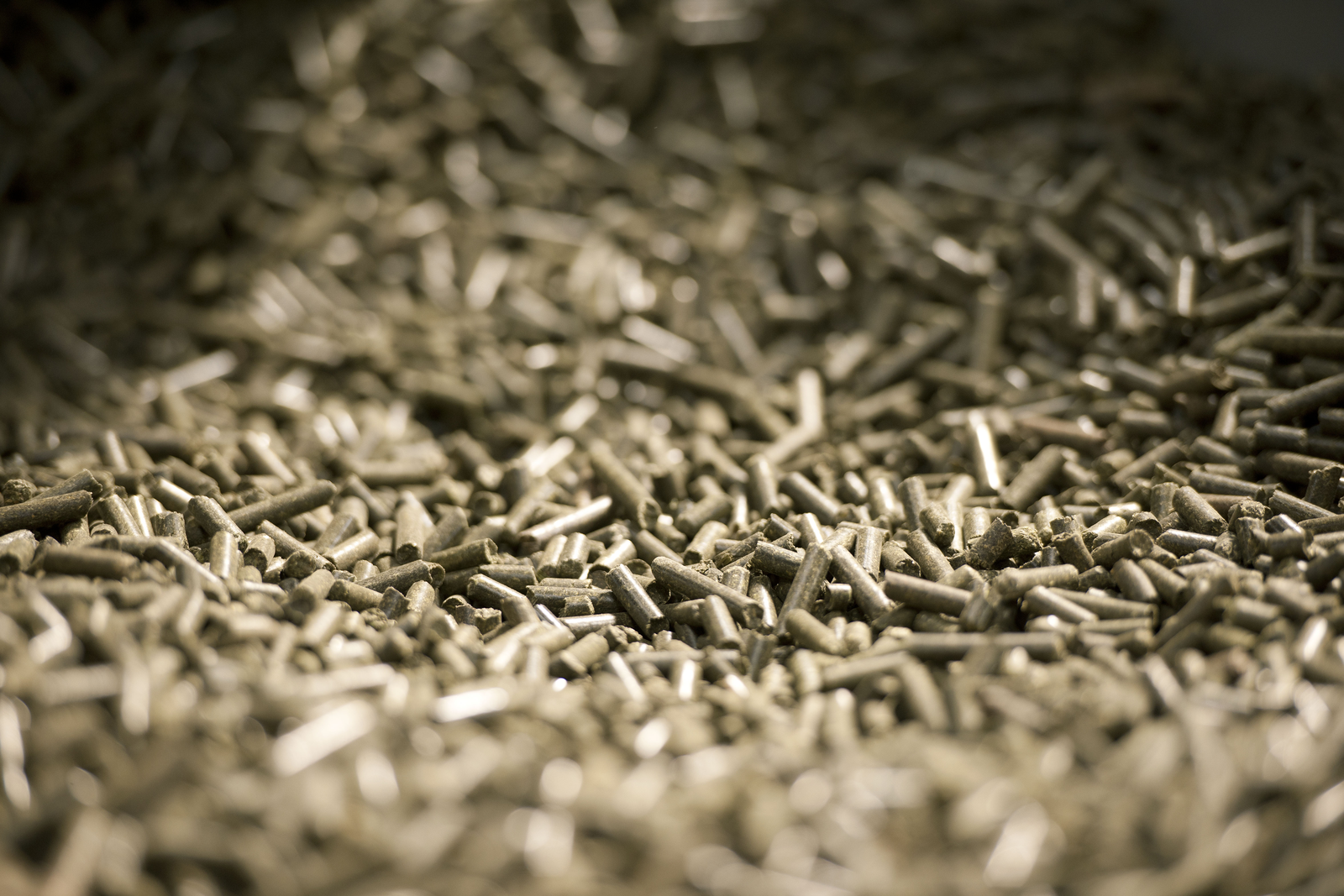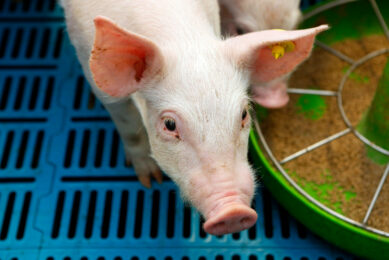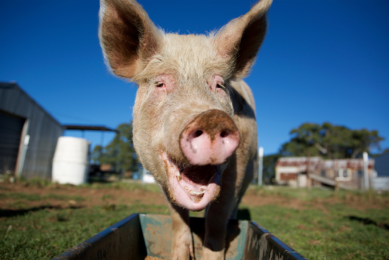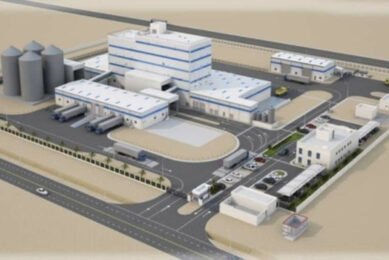Thermal treatment improves stability and hygiene of feed

Feed can be a potential transmission vector of pathogens and hence a contamination source for animals. Thermal processes can reduce microbial contaminations of ?feedstuffs. Expansion treatment and organic acids inclusion have a high potential to be used for hygienisation of poultry feed.
There is considerable evidence that feed ingredients and animal feed are frequently contaminated with foodborne bacterial pathogens like Campylobacter species and non-Typhi serotypes of Salmonella enterica, Shiga toxin–producing strains of Escherichia coli, and Yersinia enterocolitica (Mead et al. 1999; Crump et al. 2002). The microbial contamination of feed ingredients and animal feed may occur during the harvesting, handling, transportation, processing and/or storage (Mahrous et al. 2001; Maciorowski et al. 2006) and can stay for months in stored feed (Davies and Wray, 1995), and would thereby be taken up by livestock. In 1994, the FDA reported that 25% of the investigated feed samples, collected from feed mills and farms were contaminated by Salmonella enterica (Crump et al. 2002) Therefore, animal feed could be a potential vector in the transmission of pathogens and toxins to the poultry and livestock. The slaughtering and/or processing facilities can be contaminated by carrier or infected carcasses which lead to transmit of pathogens through the food chain to human (Cox et al. 1986). The high risk ingredients in the industrial compound feed are oil seed meals, vegetable proteins and animal derived proteins (EFSA, 2008). A positive correlation between the presence of Salmonella in the poultry feed and their isolation on carcasses has been observed (Bains and MacKenzie, 1974). This is important as over 50% of all traceable human cases of salmonellosis have been associated with the consumption of eggs and other poultry products (Ebel et al. 1992).
Thermal processing and organic acid inclusion
The need for biological safety of the poultry products initiated a worldwide search to find an economically efficacious feed management strategy, which decontaminates feed, and meanwhile, would be putatively beneficial for the gut microbiota and have no negative impact on the animal welfare, performance and consumer health. Several studies have shown the potential of thermal processes in the reduction of microbial contaminations of feedstuffs (Mossel et al. 1967; Jones et al. 1991), however, feed treated with heat is at the risk for recontamination during the cooling process. Organic acids are often used in feed production to reduce bacterial contaminations and to prevent recontamination (Martin et al. 2005; Ricke, 2005) and both strategies may act synergistically (Tabib et al. 1984). Thermal processing of feed and the inclusion of organic acids can improve the stability and hygiene of feed, might alter the chemical and physical characteristics of its constitutive ingredients, can improve the nutritional value of animal feeds, might have beneficial effects on the gastrointestinal function and the microbial status of gastrointestinal tract (Dibner and Buttin, 2002; Jones, 2011; Abdollahi et al. 2013).
Effects on nutrient digestibility and gut microbiota
The main objective of the present study was to investigate the effects of different thermal processes including pelleting (P), long-term conditioning at 85°C for 3 minutes (L), or expanding at 110°C (E110) and 130°C for 3-5 seconds (E130) without or with 0.75 and 1.5% organic acid supplementation (63.75% formic acid, 25.00% propionic acid and 11.25% water) and their interactions on hygienic status of broiler feed, nutrient digestibility and bacterial composition and activity in the gastrointestinal tract of broiler chicks. In total, 960 one-day-old broiler chicks were randomly assigned to eight replicates using a 3 × 4 factorial arrangement. Performance variables were determined, and the relative organ weights, ileal and total amino acid (AA) digestibilities were measured at d 35. Also, at d 35, bacterial cell numbers in the crop, ileum and caecum, and bacterial metabolites in the crop, gizzard, ileum and caecum were determined. The findings of the current study demonstrated that the applied thermal processes and organic acids inclusion were effective strategies in order to decontaminate broiler feed.
Effect on intestines and bacteria
The organic acids inclusion linearly improved feed efficiency in the first week (P ≤ 0.05). The acid inclusion levels and thermal treatments had no significant effect on the performance variables at later intervals of the growing period. The inclusion of organic acids had a quadratic effect on total and ileal digestibility of isoleucine (P ≤ 0.05); while it had no significant effect on the ileal and total digestibility of other AA and nutrients. The inclusion of 1.5% organic acids increased cell numbers of all clostridial clusters in the crop. The organic acids supplementation increased the propionic acid concentration in the crop and gizzard whilst there was a decrease in lactic acid concentration. In the ileum, the 0% organic acids group had the highest numbers of Lactobacillus spp. and enterobacteria. Inclusion of 1.5% organic acids increased ileal acetate concentration. The L group showed the lowest ileal AA and crude protein digestibility. The relative weights of jejunum and small intestine were significantly higher in the E130 group compared to P and L (P ≤ 0.05). Increasing the feed processing temperature led to an increase of lactobacilli in the crop and ileum, while clostridia and enterobacteria seemed unaffected. Similarly, lactate concentrations increased in the ileum, but short chain fatty acids remained identical. In the crop, an increase for acetate was found for the E130 group compared to all other thermal treatments.
Conclusion
In conclusion, the results of the study demonstrated that the long-term thermal conditioning might decrease the ileal nutrient digestibility, while pelleting and expansion, without or/and with organic acids supplementation, seemed to be less critical. While expansion increased lactobacilli and lactate in the crop and ileum, organic acid addition remarkably influenced bacterial composition and activity in the crop. Regarding the observed effects of applied thermal and organic acids treatments on the microbiology of gastrointestinal tract, they might have modification effects on the bacterial composition of the upper gastrointestinal tract in broiler chicks that might offer interesting perspectives to achieve a better control of intestinal bacterial colonisation in poultry. These indicate the potential of expansion process and organic acids addition for the hygienisation of broiler feed. AAF
The present article is a summary from two published manuscripts in ‘Poultry Science’
© 2014 Poultry Science Association Inc.
References are available on request.
Authors:
Dr Farshad Goodarzi Boroojeni and Prof. Dr Jürgen Zentek, Institute of Animal Nutrition, Department of Veterinary Medicine, Freie Universität Berlin, Germany











